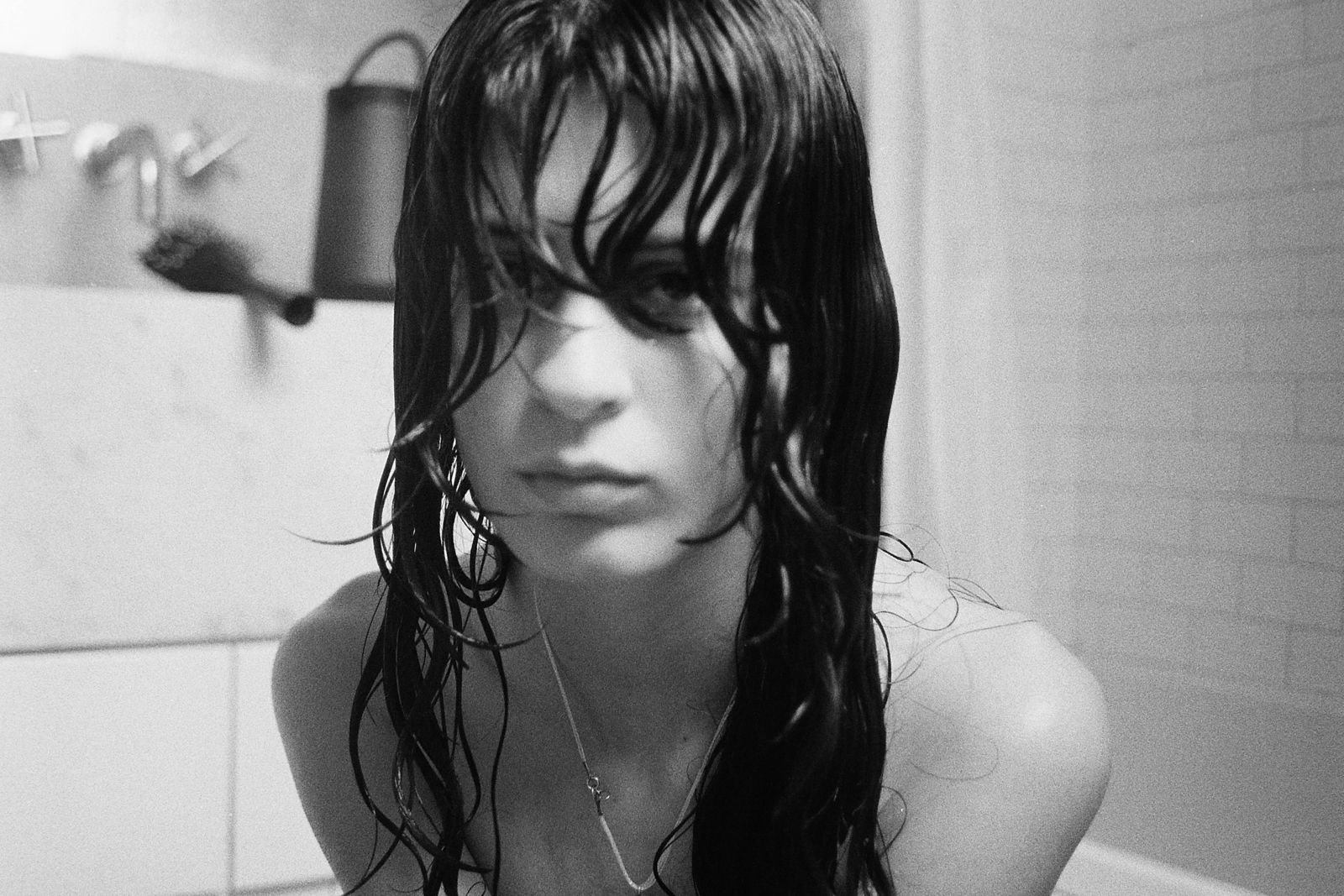Sara Sahores
“For me, taking photos has become a constant drive, a way of seeing,” reads the first line of the artist’s statement. The said artist is Sara Sahores, a 25-year-old Argentinian photographer based in London. Sara is currently completing her postgraduate studies in photography at the Royal College of Art (RCA). As a result of a multidisciplinary combination, her academic background in architecture, and her extensive studies alongside various fine artists, Sara has developed a unique way of capturing the world around her. Her work is marked by a deep introspection, demonstrating her acute ability to capture the overlooked moments of everyday life.
Photo Courtesy: Sara Sahores.
“I am here alone for the first time in weeks to take up my 'real' life again at last.” I quote here a phrase from May Sarton’s, whose works I began reading a few months back, as I was embraced by the bitter and frivolous London winter. At the time, I wrote down and kept this quote in my little book of notes, nested between drawings, to-do lists, upcoming appointment reminders, and jumbled thoughts. I return to it now as I write this, with a newly found source of sentimentality towards the words. Something in Sarton’s enigmatic words attracted me profoundly, a familiar feeling I now recognise. It is the same feeling I had when I discovered Sara's photos for the first time.
I read these words over and over in my head, trying to make sense of Sarton’s choosing of the word real as opposed to another. What is that real that Sarton speaks of? It is almost as if she is saying there is something unreal, surreal or otherwise fake about the world or the life she inhabited all the prior weeks. Sarton is describing the real as reserved for certain periods of time, only occurring when none else is around, in designated spaces, moments. This perception of the real is one that Sara transmits through her photographs. Her images invoke those moments of solitude and quiet contemplation whereby we make sense of the real and the emotions that arise when we are alone with our own thoughts. Sara might not offer an explanation or a framework for understanding the private world that she photographs, but she does offer us a possible answer to this question of the real that Sarton speaks of.
Flores desde mi ventana, Polaroid, 2024. Photo Courtesy: Sara Sahores.
Sara’s most recent project, "Swimming Studies," takes place underwater. She employs 35mm film to capture the fluid dynamics of swimming bodies. The resulting photographs, printed as c-prints on glossy paper, offer a mesmerising view of swimmers in motion. The dark scene in the image triggers a background question about what exists in the darkness, something that is there that we cannot see. By submerging herself and her camera in the pool, she explores how bodies move and transform in water, creating a serene yet dynamic visual experience. How does a body move in water? There is a lightness and weightlessness of the body, akin to the law of zero gravity, a feeling only experienced underwater. Unlike moving through air, there is a change in the atmospheric pressure in water: it is denser, heavier, requiring of more strength.
Swimming is a one-person sport, but like many others, it is about moving your own full body. It is about thrusting it forward through the surface, to take charge of oneself, of what is one’s own. There is also the challenge of keeping oneself afloat, the exertion that occurs when your feet are no longer grounded on dry land but floating through matter. It is your body and the water: no shortcut to take, no railing to hold onto, only the act of moving forward or moving towards the surface.
Viewing these images, one finds again the same solitude. The daily routine of swimming is a solitary activity; we can almost imagine the swimmers' thoughts as they listen to the water's music. As Sara puts it: “Diving in the pool, holding your breath, taking in the stillness for a moment that is short and long at the same time. Coming out physically, coming out mentally.”
Swimming Studies, 35mm film photographs, c-printed in glossy paper (200x130 cm), 2024. Photo Courtesy: Sara Sahores.
Swimming Studies, 35mm film photographs, c-printed in glossy paper (200x130 cm), 2024. Photo Courtesy: Sara Sahores.
The study and exploration of routine actions and bodies in the mundane as seen in several of her previous works occupies an important portion of Sara’s oeuvre. "Baño de Mujeres" (Women's bathroom) is a study of women in their bathrooms, engaging in mundane routines and everyday mindless activities like brushing their teeth, showering, and waxing. These private actions, unrehearsed and often taken for granted, are transformed through Sara’s lens into intimate moments of solitude. The bathroom in itself is a private space, one where the body is exposed, unclothed: "I capture things that are usually not allowed to be seen," Sara explains. In contemporary life, bathroom time is one of the only times individuals are truly alone, creating a sacred space for self-reflection and authenticity. Here, one can sing loudly, gaze into the mirror, and be entirely oneself. For over two years (2022-2023), Sara documented these moments, revealing the quiet beauty and vulnerability of daily rituals.
Women’s Bathroom, digital and film photographs, black and white, 2022- 2023. Photo Courtesy: Sara Sahores.
While these two projects explore the solitude of others, "Plastic bags I" (2022- 2023) reverses the role from subject to object. The series of photographs represents a mirror of Sara's own solitude: the photographer turns the lens inward to reflect her own unmediated and contemplative experience of solitude. Through spontaneous documentation of empty landscapes and plastic bags scattered around the city, Sara conveys a profound sense of silence and stillness. Sara photographs the objects in the same way as the subject, focusing on volumes, textures, and surfaces rather than their associations. She compares the surface of plastic to the surface of water and likens the volume of a bag filled with air to the volume of a part of the human body. We can almost hear the deafening quietness, her own breathing through the static photograph, feeling the absence of anyone else besides her and her camera. Here again, these images return to us to moments of silence. They invoke all that which comes to the surface when the world, our world, becomes silent.
Plastic Bags I, digital photographs, 2022- 2023. Photo Courtesy: Sara Sahores.
Plastic Bags I, digital photographs, 2022- 2023. Photo Courtesy: Sara Sahores.
Sara’s work encompasses all kinds of challenges confronted by the ordinary person, while also exploring the world in which this subject is absent. Her images defy categorisation. It is difficult to classify Sara under a single category. Or into any of the existing categories within the market. By resisting and not conforming to any single motif within her works, like the anonymity she puts forth in them, Sara consciously or unconsciously denies us part of her own identity, allowing an unmediated, silent, and direct encounter with her artwork. Her photography brings into visual the real that Sarton articulates through her words, creating a new dimension of silence, intimacy, and solitude within her images. Her photos are like those of swimmers, a breath in solitude that resignifies the parts; a submission in a contemplative state in order to appreciate the expansion of space and time. In those moments when the world is completely silent, only the internal hum of the mind, the rhythm of the breath, and the quiet click of the camera remain.
For more of her work, visit her Instagram or website.
Mora Pranteda
Emerging Artists Co-Editor, MADE IN BED








